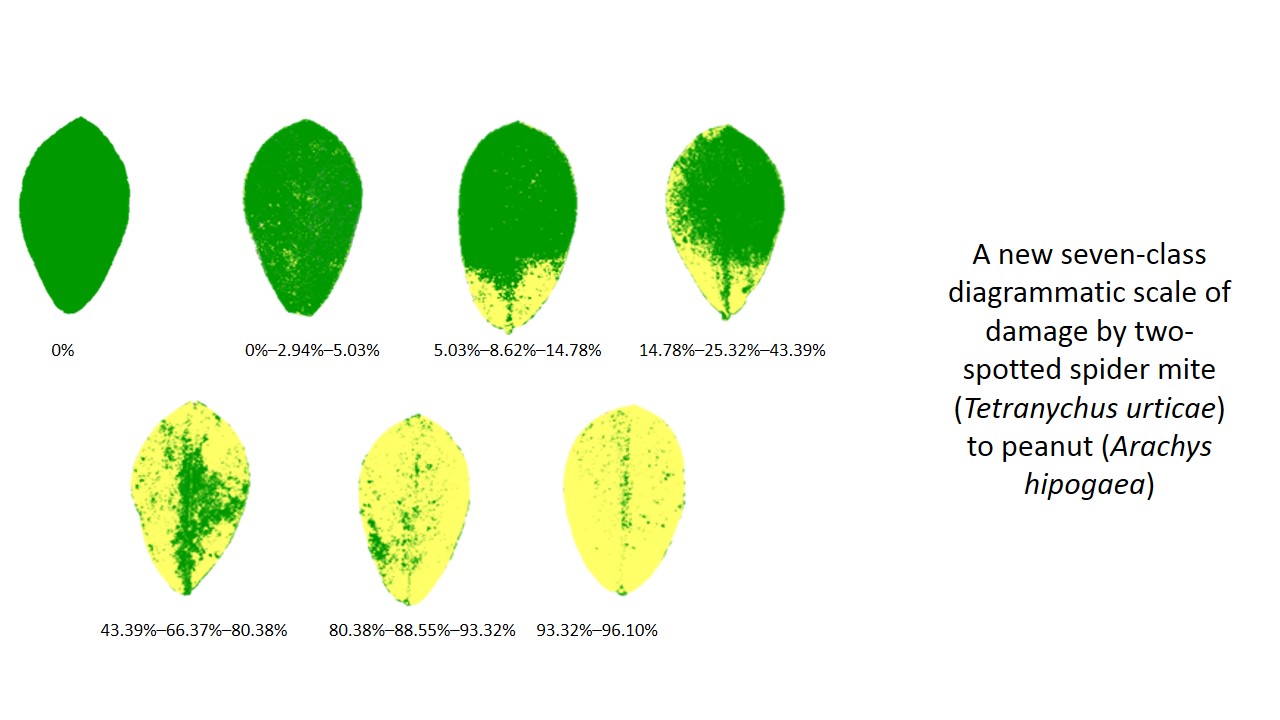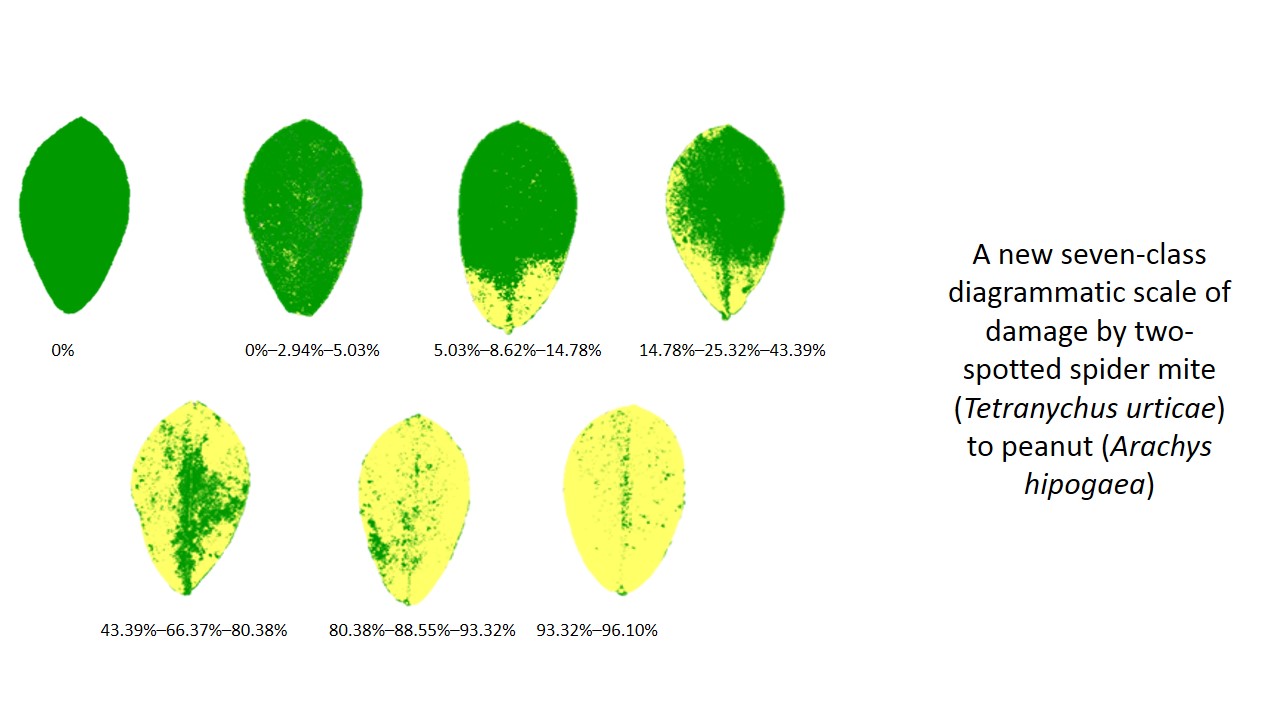Development and validation of diagrammatic scales to evaluate damage by the two-spotted spider mite (Tetranychus urticae) in peanut
DOI:
https://doi.org/10.48162/rev.39.024Keywords:
diagrammatic scale, Tetranychus urticae, peanutAbstract

Argentina is the second largest peanut (Arachis hypogaea L.) exporter in the world. The main peanut pest in our country is the two-spotted spider mite (Tetranychus urticae Koch 1836). To date, there is no validated method to quantify this pest. The aim of this work was to develop and validate a logarithmic diagrammatic scale to assess damage by the two-spotted spider mite in peanut. In 2015-16, 200 leaflets were collected from a plot infested with the pest. Damaged leaf area (DLA) was calculated using SisCob software. Six-, seven-, eight- and nine-class scales were proposed. Mean values for each class and scale were obtained with 2-LOG. Leaflets were analyzed by 13 raters who used the four proposed scales. Precision and accuracy were determined by simple linear regression between the DLA and estimated damaged leaf area. Reproducibility was determined by linear regression between estimates of raters combined in pairs. The seven-class scale was the best validated one for all the parameters. Most raters showed constant deviations and overestimated DLA, whereas only one rater presented systematic deviations. This seven-class scale is the first developed and validated one to evaluate two-spotted spider mite damage to peanut in Argentina.
Highlights
- According to the validation results, the seven-class diagrammatic scale was the best one in terms of accuracy, precision and reproducibility with values above 0.80, 0.75 and 0.75 respectively.
- The scales are useful tools for pest assessment, fundamental parameters for integrated pest management.
- The seven-class scale is the first one developed and validated for evaluating damage by the two-spotted spider mite in peanut crop in Argentina.
- With this scale a loss function will be calculate which will allow the estimation of the EIL of this pest.

Downloads
Published
Issue
Section
License

This work is licensed under a Creative Commons Attribution-NonCommercial-ShareAlike 3.0 Unported License.
Aquellos autores/as que tengan publicaciones con esta revista, aceptan las Políticas Editoriales.


